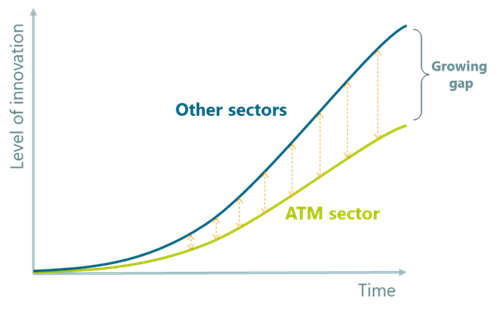In a world where technology advances at breakneck speed, the air traffic management (ATM) sector finds itself at a crossroads and lagging behind other sectors. The challenge? Escaping from conservative procurement approaches driven principally by regulation and not settling for the status quo! This delicate balance between innovation and risk is one that Egis’ Dr Rafi Riley addressed in a talk at Airspace World in Geneva. Today, he translates those insights into a blog explaining how air navigation service providers (ANSPs) can be empowered by strategic procurement.
What’s at stake?
The Airspace Architecture Study of 2018 offered a revolutionary vision for the European ATM industry, emphasising digitalisation, service-oriented architectures, and a seamless, integrated future. Even now, its principles underpin the ATM Master Plan—a testament to its enduring relevance. Today, digitalisation is not just an option but a necessity for ANSPs and it requires new systems and new architectures.
Procurement is a difficult process, especially of major ATM systems in a safety critical industry under public procurement rules. Our experience of supporting over 30 ANSPs globally with procurement – from developing procurement strategies, writing technical requirements, through to evaluating tender responses and supporting contract negotiation has given us a unique understanding of the process and the challenges! While there is often direction from the top to deliver a technology strategy in line with the future vision of the sector, we very rarely see elements of the strategy trickle down to procurement. The reasons vary, but can include:
- Solutions being asked for that don’t yet exist (e.g. turn-key SWIM or Virtual Centre solutions)
- Vendor-lock in and safety considerations, resulting in a cautious procurement approach that maintains the status quo.
- Resourcing constraints for the procurement process leading those responsible to choose the conventional path.
This results in ANSPs deferring to conventional procurement approaches using commercial-off-the-shelf solutions and with innovation mainly driven by regulation (such as CP1 regulation in Europe). When an ATM system traditionally has a 10-15 year life cycle it’s especially difficult for an ANSP to keep up with the wider technological advances that take place in that period. So, it’s no surprise that ATM continuously lags behind other industries.

